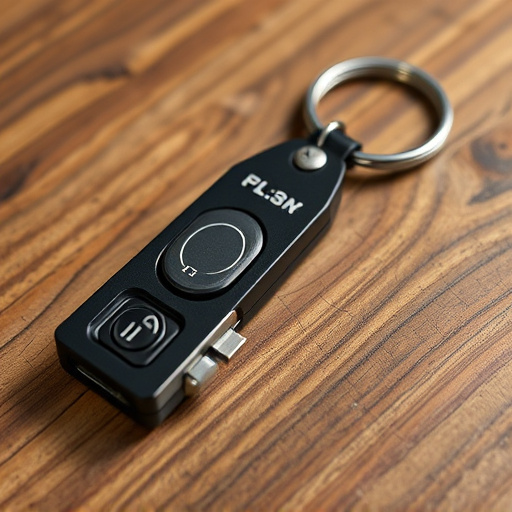Design minimalist, discreet hidden self-defense keychain tools with materials matching everyday carry items, focusing on function and aesthetics. Use lightweight composites or textured finishes for stealthy deployment without clinking. Prioritize ergonomic clips for easy access in diverse situations, comfortable gripping, and gloved hand operation. Understand local laws regarding hidden self-defense keychain tools to ensure legal compliance.
Unveiling the ultimate in discreet self-defense, this article explores the art of keychain weapon concealment with a pocket clip design. From the subtle to the sophisticated, we delve into the principles that ensure these hidden self-defense tools remain undetected. We analyze material choices, balancing strength and stealth, and examine ergonomic designs for ease of use. Additionally, legal considerations are addressed, offering insights into responsible ownership. Discover the perfect blend of functionality and secrecy in this comprehensive guide to keychain weapon concealment.
- Pocket Clip Design Principles for Discretion
- Material Choices: Strength vs. Stealth
- Ergonomics and Ease of Use
- Legal Considerations for Self-Defense Tools
Pocket Clip Design Principles for Discretion
When designing a pocket clip for hidden self-defense keychain tools, discretion is key. The clip should seamlessly integrate with everyday carry items like jeans or backpacks, avoiding attention-grabbing features. Opt for sleek, minimalist designs that blend into the background, using materials that match common accessories to prevent visual discrepancies.
Focus on functionality without sacrificing aesthetics. A well-designed pocket clip should securely hold the keychain while allowing easy access. Consider ergonomic angles and attachment points that facilitate quick deployment, ensuring users can retrieve their self-defense tool discreetly and efficiently in various situations.
Material Choices: Strength vs. Stealth
When designing a keychain weapon concealment with a pocket clip, material selection is crucial for balancing strength and stealth. For maximum durability and reliability in self-defense scenarios, robust materials like high-strength steel or advanced alloys are essential. These materials ensure the keychain can withstand frequent use, harsh environments, and the stress of sudden deployment. However, focusing solely on strength can make the device more noticeable due to its weight and metallic sound.
To achieve a balance, consider using lightweight yet durable composites or textured finishes that minimize the clinking often associated with metal tools. By incorporating stealthy materials, you create hidden self-defense keychain tools that blend seamlessly into daily carry items, offering both security and discretion. This approach allows users to confidently keep their defense option close at hand without drawing unnecessary attention.
Ergonomics and Ease of Use
The ergonomic design of a keychain weapon concealment pocket clip is paramount for ensuring ease of use and hidden self-defense tools accessibility. A well-designed clip should comfortably fit in your hand, allowing for a swift draw without causing discomfort or awkwardness. This feature is crucial for individuals who need to access their defense tool quickly during unexpected situations. The pocket clip must be easily operable, even with gloved hands, ensuring users can discreetly retrieve and deploy their hidden self-defense keychain tools promptly.
The ease of use extends beyond the draw mechanism. A thoughtfully designed clip should seamlessly integrate into everyday carry routines, allowing users to attach and detach the keychain weapon effortlessly. This simplicity encourages consistent carrying, increasing the likelihood that individuals will have their hidden self-defense tools readily available when needed.
Legal Considerations for Self-Defense Tools
When considering a keychain weapon concealment with a pocket clip, it’s crucial to understand the legal implications in your region. The legality of self-defense tools varies greatly from one location to another; what’s allowed in one state or country might be strictly regulated or even banned in another. Hidden self-defense keychain tools, if used, should comply with local laws and regulations. This includes understanding the definition of a weapon in your area and any restrictions on the type of self-defense device you can carry openly or concealed.
Before integrating a pocket clip for your keychain weapon, research your state’s or province’s self-defense laws. Check for any specific requirements regarding size, capacity, and material of the tool. Additionally, familiarize yourself with the rules around consent and when using such devices is justified. Staying informed about these legal considerations ensures that you’re not only compliant but also prepared to defend yourself legally if needed.
When considering a keychain weapon concealment pocket clip design, it’s crucial to balance discretion, functionality, and legal compliance. By adhering to sound design principles, choosing materials strategically, prioritizing ergonomics, and staying informed about local laws regarding self-defense tools, you can create effective yet hidden self-defense keychain tools. Embrace innovative designs that seamlessly integrate protection into your everyday carry, ensuring both safety and peace of mind.
